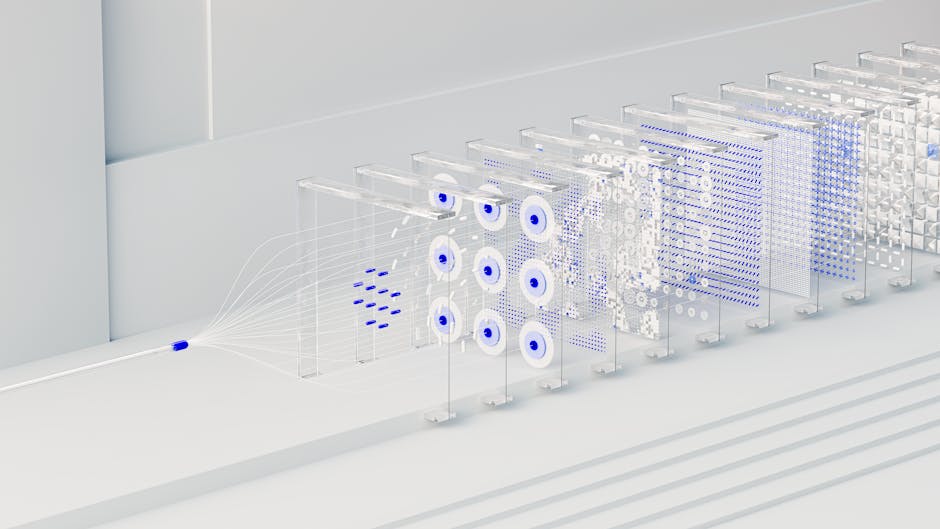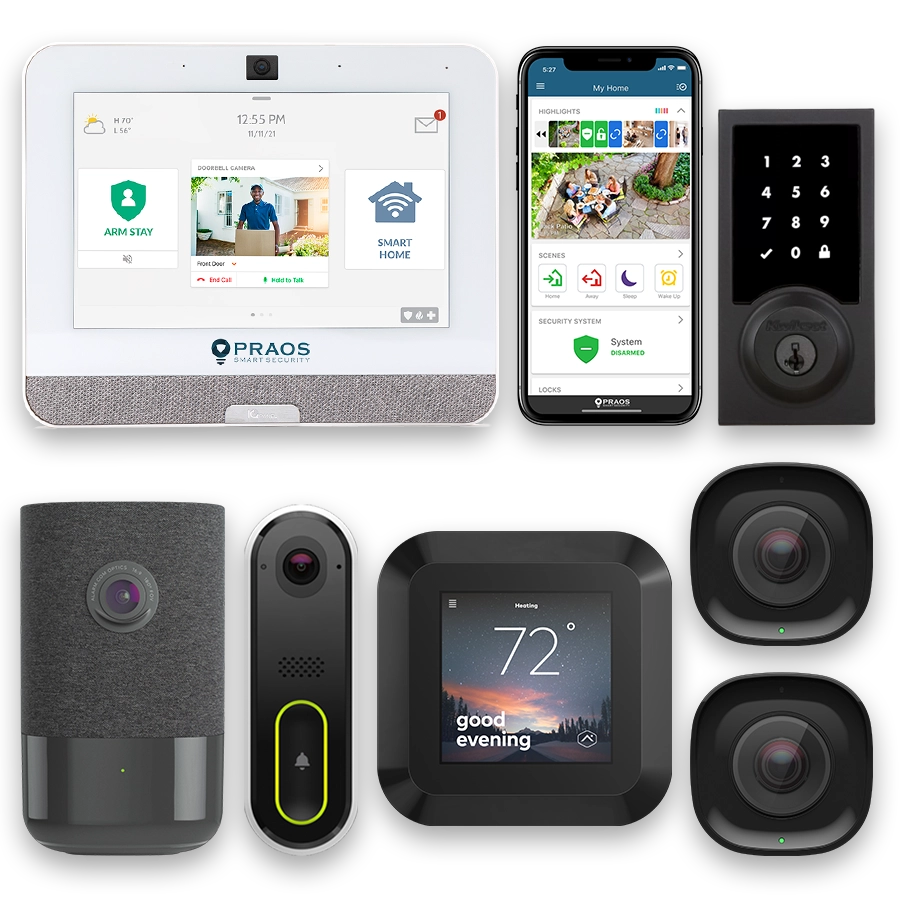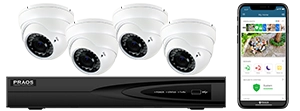- Evolution of Alarm Systems: A Historical Perspective in Virginia
- Current Leading Technologies in Alarm Systems
- Integration of Smart Home Devices with Modern Alarm Systems
- The Rise of AI and Machine Learning in Security Solutions
- Impact of IoT on Alarm Systems and Security Networks
- Regulatory and Compliance Standards for Security Systems in Virginia
- Future Trends and Predicted Innovations in Alarm Systems
Evolution of Alarm Systems: A Historical Perspective in Virginia
The evolution of alarm systems in Virginia has mirrored broader technological advancements and shifting security needs. Initially, alarm systems were rudimentary, often consisting of basic mechanical setups such as tripwires and bells. These early mechanisms aimed to provide simple alerts in the event of unauthorized entry but were largely limited in their effectiveness and reach.
The introduction of electricity at the turn of the 20th century revolutionized alarm technology. Electric sensors, particularly those using magnetic contacts for doors and windows, became prevalent. These systems provided more reliable intrusion detection and could be integrated with telephone lines to alert local authorities automatically.
By the mid-20th century, the development of central monitoring stations marked a significant leap. Companies began offering services where alarms could be monitored around the clock, ensuring quicker response times from security personnel and emergency services. This period also saw the introduction of the first commercial burglar alarms, which became popular among businesses seeking enhanced security measures.
In the 1980s and 1990s, technological advancements further transformed alarm systems. The introduction of motion detectors, glass break sensors, and closed-circuit television (CCTV) provided more comprehensive security solutions. These systems used infrared, microwave, and acoustic technologies to detect potential threats, offering a multi-layered approach to building security.
As the internet proliferated in the late 1990s and early 2000s, alarm systems began integrating digital communications. This shift allowed for remote monitoring and control of alarm systems via computer and, eventually, smartphone applications. Homeowners and business operators could now receive real-time notifications and manage their security systems from virtually any location.
In recent years, the trend towards smart home technology has significantly impacted alarm systems. Devices are now often part of larger home automation ecosystems, connected through Wi-Fi and managed via centralized apps. This integration allows users to combine their security systems with other smart devices, such as cameras, lights, and door locks, enhancing overall home and business security.
Overall, the evolution of alarm systems in Virginia reflects a broader trend towards increasingly sophisticated and interconnected security solutions. Advances in technology have continuously expanded the capabilities and accessibility of these systems, making them more effective in protecting homes and businesses from potential threats.
Current Leading Technologies in Alarm Systems
The landscape of alarm systems has significantly transformed in recent years, driven by technological advancements that enhance the security and functionality of these systems. In Virginia, current leading technologies in alarm systems are advancing at a rapid pace, ensuring better protection for homes and businesses throughout the state.
Wireless Alarm Systems: One of the most notable trends is the shift towards wireless alarm systems. These systems are easier to install and more flexible than traditional wired systems. Wireless technology enables seamless integration with various smart devices, providing real-time alerts and easy management through smartphones and tablets.
Video Surveillance: Modern alarm systems now frequently incorporate high-definition video surveillance. Today’s systems often include features such as night vision, motion detection, and remote viewing capabilities. This has enhanced the ability of users to monitor their properties comprehensively and respond promptly to any suspicious activities.
Smart Sensors: Smart sensors have become a staple in contemporary alarm systems. These sensors can detect a range of conditions, including movement, glass breakage, smoke, carbon monoxide, and flooding. Their ability to communicate with the main control panel and the user’s smartphone ensures that users are immediately aware of potential threats or emergencies.
Biometric Access Control: Biometrics technology, which includes fingerprint scanners, facial recognition, and retinal scanners, is increasingly being integrated into alarm systems. This technology enhances security by ensuring that only authorized individuals can gain access to secured areas, reducing the risk of unauthorized entry.
Environmental Monitoring: Alarm systems are also extending their capabilities to monitor environmental conditions. This includes the detection of dangerous levels of carbon monoxide, smoke from fire, and even water leaks. These features can prevent catastrophic incidents by alerting homeowners or business operators before the situation escalates.
Cloud-Based Systems: The advent of cloud technology has revolutionized the way alarm systems operate. Cloud-based systems offer numerous benefits, including remote access, secure data storage, and the ability to update software and firmware regularly without significant manual intervention. This ensures that the alarm systems remain up to date with the latest features and security patches.
Mobile Integration: The integration with mobile technology allows users to control their alarm systems remotely. Through dedicated apps, users can arm or disarm their systems, view live feeds from security cameras, and receive notifications of any triggered alarms wherever they may be. This capability provides unparalleled convenience and peace of mind.
These leading technologies are continuously being refined and adapted, making them more accessible and effective. The advancements in alarm systems are contributing to a safer environment in Virginia, protecting both residential, and commercial properties against various security threats.
Integration of Smart Home Devices with Modern Alarm Systems
The integration of smart home devices with modern alarm systems has revolutionized both home and business security in Virginia. As these technologies develop, they offer enhanced convenience, control, and an increased level of security that traditional alarm systems could not provide.
Advantages of Smart Home Integration
Smart home devices can seamlessly communicate with alarm systems, allowing for a more dynamic and responsive security setup.
- Remote Monitoring: Home and business owners can monitor their properties in real-time through smartphone apps, receiving instant alerts about security breaches.
- Automation: Smart devices can automate safety measures, like locking doors or activating lights, to deter potential intruders.
- Energy Efficiency: Integration can also help in managing energy consumption by controlling heating, cooling, or lighting systems when homes or offices are unoccupied.
Popular Smart Devices for Security Integration
Several smart devices are commonly integrated with modern alarm systems to enhance security standards.
| Device Type | Function |
|---|---|
| Smart Cameras | Provide 24/7 video surveillance and motion detection alerts. |
| Smart Locks | Allow for keyless entry and remote access control. |
| Smart Thermostats | Manage climate control and can be integrated to trigger based on occupancy data. |
| Smart Lights | Automate lighting schedules to simulate occupancy and deter intruders. |
Integration Platforms
Numerous platforms are available that facilitate the integration of various smart devices with alarm systems, making them work together smoothly.
- Z-Wave: A widely used wireless protocol suitable for security systems, allowing the integration of a myriad of smart devices.
- IFTTT (If This Then That): Enables users to create ‘recipes’ that connect smart devices and security systems to perform automated actions.
- Amazon Alexa/Google Assistant: Voice-controlled platforms that manage smart devices through simple voice commands, enhancing user accessibility and control.
Challenges and Considerations
While the integration of smart home devices provides numerous benefits, there are several considerations to keep in mind:
- Security Vulnerabilities: Smart devices rely on internet connections, which could be potential entry points for cyber threats if not properly secured.
- Compatibility: Not all smart devices are compatible with one another or with existing alarm systems, which can complicate integration.
- Cost: Initial investment in smart home devices and integration technology can be high, but may provide long-term savings through increased energy efficiency and security.
Overall, the integration of smart home devices with modern alarm systems represents a significant step forward in the evolution of security solutions, offering enhanced control, higher convenience, and improved safety for both residential, and commercial properties in Virginia.
The Rise of AI and Machine Learning in Security Solutions
Artificial Intelligence (AI) and Machine Learning (ML) are transforming the landscape of security solutions. These advanced technologies enable alarm systems to not only detect potential threats but also to learn from patterns and improve over time, thus providing a higher level of security for both homes and businesses in Virginia.
Enhanced Threat Detection
AI-powered alarm systems leverage complex algorithms to identify unusual patterns and behaviors that may signify a security threat. Unlike traditional systems that rely on predetermined rules, AI can adapt to new information, thus improving accuracy in real-time threat detection.
- Behavioral Analysis: By analyzing the typical activity within premises, AI can distinguish between normal and suspicious behaviors.
- Facial Recognition: AI-enhanced cameras utilize facial recognition technology to identify known individuals and alert the authorities to potential intruders.
Predictive Capabilities
Machine Learning algorithms can predict potential security breaches by analyzing historical data and identifying patterns that precede incidents. This allows for proactive measures to be taken before a breach occurs.
For example, ML can analyze past break-in attempts to determine the most vulnerable times and areas in a property. Property owners can then enhance security measures during those periods or locations.
Data and Performance Metrics
AI and ML systems enable detailed performance metrics that help in understanding and improving security measures. The following table shows types of data collected by AI-enhanced security systems:
| Data Type | Insights Provided |
|---|---|
| Video Footage | Identification of suspicious activities and individuals |
| Sensor Data | Detection of unusual movements and environmental changes |
| Historical Data | Predictive analysis and identification of patterns leading to breaches |
Challenges and Considerations
While AI and ML offer significant advantages, there are also challenges to consider:
- Privacy Concerns: The use of facial recognition and data collection raises privacy issues that need addressing through stringent policies and regulations.
- Implementation Costs: Although costs are decreasing, AI-enhanced systems still require a significant investment in both hardware and software.
Overall, the rise of AI and Machine Learning in alarm systems signifies a major advancement in security solutions, providing enhanced threat detection, predictive capabilities, and valuable performance metrics. However, it is crucial to address privacy and cost concerns to ensure these technologies are effectively and ethically deployed in Virginia.
Impact of IoT on Alarm Systems and Security Networks
The Internet of Things (IoT) has significantly impacted alarm systems and security networks, providing enhanced connectivity, real-time data sharing, and sophisticated integration capabilities. IoT involves interconnected devices that communicate and share data through the internet, facilitating the seamless operation of modern alarm systems.
One of the primary impacts of IoT on alarm systems is the ability to incorporate a wide range of sensors and devices. Smart sensors can detect various environmental conditions such as motion, smoke, or water leaks and communicate this information instantaneously to a central monitoring system. This heightened level of awareness allows for quicker responses to potential threats and anomalies.
Remote monitoring and control have been vastly improved through IoT integration. Homeowners and business operators can now manage their security systems from anywhere using smartphones or other internet-enabled devices. This capability not only increases convenience but also enhances security by enabling real-time alerts and remote actions, such as locking doors or triggering alarms.
IoT also facilitates the creation of more comprehensive security networks. Alarm systems can be connected seamlessly with other security components such as cameras, smart locks, and lighting systems. This interconnectedness enables the synchronization of responses, such as activating surveillance cameras when motion is detected or turning on lights when an alarm is triggered.
Another significant benefit of IoT in alarm systems is the collection and analysis of data. Modern IoT-enabled systems can gather vast amounts of data that can be analyzed to identify patterns, trends, and potential vulnerabilities. This data-centric approach allows for continuous improvement of security measures and more predictive maintenance of the system components.
However, IoT integration also poses certain challenges, particularly regarding cybersecurity. As more devices become connected, the potential points of vulnerability increase. It’s essential for systems to implement robust encryption, regular firmware updates, and other cybersecurity measures to protect against hacking and data breaches.
Industries and consumers in Virginia have been embracing these IoT advancements, leading to the development of more responsive, efficient, and intelligent alarm systems. Companies are investing in IoT technologies to deliver solutions that not only safeguard physical assets but also provide peace of mind.
In conclusion, the integration of IoT into alarm systems represents a significant advancement in security technology. It enables broader and more efficient monitoring capabilities, enhances real-time responses, and provides valuable insights through data analysis. While challenges remain, particularly in the area of cybersecurity, the overall impact of IoT on security networks is transformative, offering improved protection for homes and businesses in Virginia.
Regulatory and Compliance Standards for Security Systems in Virginia
In Virginia, as in many other states, the implementation of security systems is governed by a stringent set of regulatory and compliance standards. These standards ensure that alarm systems operate efficiently and within the boundaries of the law, providing effective security solutions for both homes and businesses.
One of the primary bodies setting these standards is the Virginia Department of Criminal Justice Services (DCJS). The DCJS is tasked with the regulation of private security services, which includes companies providing alarm system installations and monitoring services. To operate legally in Virginia, alarm companies must be licensed by the DCJS. This licensing process involves meeting specific criteria, such as background checks for company principals and compliance with training requirements for all employees involved in security system operations.
Furthermore, alarm system installers and monitoring personnel must complete mandatory training programs approved by the DCJS. These programs cover a range of topics, including basic system installation, troubleshooting, and understanding the legalities surrounding surveillance and monitoring. Continuing education is also required to ensure that personnel remain knowledgeable about the latest technologies and regulatory changes.
Alarm system design and installation must adhere to the National Fire Protection Association (NFPA) standards, specifically the NFPA 72 National Fire Alarm and Signaling Code, which provides guidelines for the proper installation and maintenance of fire alarm systems. Compliance with these standards is crucial for ensuring both safety and legal conformity.
Additionally, Virginia requires alarm systems to comply with local ordinances, which may vary between counties and municipalities. These ordinances can include requirements for system registration, false alarm management, and fines for non-compliance. For instance, many localities have specific protocols for handling false alarms to reduce the strain on local law enforcement and emergency services.
Data privacy regulations also play a significant role in the deployment of modern alarm systems, particularly those integrated with smart technologies and surveillance capabilities. Security companies must ensure that their systems and data handling practices comply with federal regulations such as the Gramm-Leach-Bliley Act (GLBA) and the General Data Protection Regulation (GDPR) if they serve customers from the European Union, as well as state-specific data protection laws.
Finally, insurance companies often mandate the use of compliant and certified alarm systems for clients to qualify for certain insurance policies or discounts. This requirement serves as an additional layer of compliance, encouraging property owners and businesses to adhere to established safety and security standards.
In summary, the regulatory and compliance landscape for security systems in Virginia is multifaceted, involving state and local regulations, industry standards, and federal data privacy laws. Adhering to these standards is essential for the lawful and effective operation of alarm systems, ensuring they provide the intended level of security while safeguarding the rights and privacy of individuals.
Future Trends and Predicted Innovations in Alarm Systems
As technology continues to evolve, the future of alarm systems stands on the cusp of several exciting and transformative innovations. These advancements promise to enhance the security of homes and businesses, particularly within dynamic markets like Virginia. One of the leading companies pioneering these developments is Praos, based in Richmond.
Looking ahead, one of the most promising trends in alarm systems is the integration of artificial intelligence (AI) and machine learning. These technologies hold the potential to significantly improve threat detection capabilities, providing faster and more accurate responses to security breaches. AI-driven systems can analyze patterns of behavior, distinguish between false alarms and genuine threats, and predict potential security events before they occur.
Another key innovation in the realm of alarm systems is the expansion of connected home experiences. Companies like Praos are at the forefront of this movement, offering unified control over security, automation, and surveillance through a single app. This seamless integration means users can manage all aspects of their home security from virtually anywhere, ensuring constant peace of mind.
Additionally, the Internet of Things (IoT) continues to play a critical role in shaping the future of alarm systems. IoT-enabled devices enhance the communication between various security components, creating a more cohesive and responsive security network. For example, smart sensors and cameras can instantly share data with alarm systems, enabling quicker and more coordinated responses to incidents.
Customization also appears to be a defining trend, as more consumers seek security solutions tailored to their specific needs and budgets. Praos exemplifies this trend by working closely with customers to design smart home systems that match individual requirements. This personalized approach not only optimizes security but also enhances user satisfaction and trust.
Looking forward, it is expected that advancements in cloud technology will further revolutionize alarm systems. Cloud-based solutions offer enhanced storage capacities, accessibility, and scalability, ensuring that security systems can grow and adapt over time. These systems also facilitate real-time updates and maintenance, reducing downtime and improving overall system reliability.
Lastly, the importance of affordability and accessibility in security solutions cannot be overstated. Praos, for instance, offers competitive rates starting at just $19.95 per month, making advanced security systems more accessible to a broader audience. By providing free equipment and installation for new customers with a monitored system plan, Praos ensures that high-quality security is within reach for families and businesses across Virginia.
In conclusion, the future of alarm systems in Virginia looks incredibly promising, with continued innovations in AI, IoT, customization, and cloud technology. Companies like Praos are leading the way, ensuring that residents and business owners alike can benefit from the latest advancements in security to protect what matters most.






